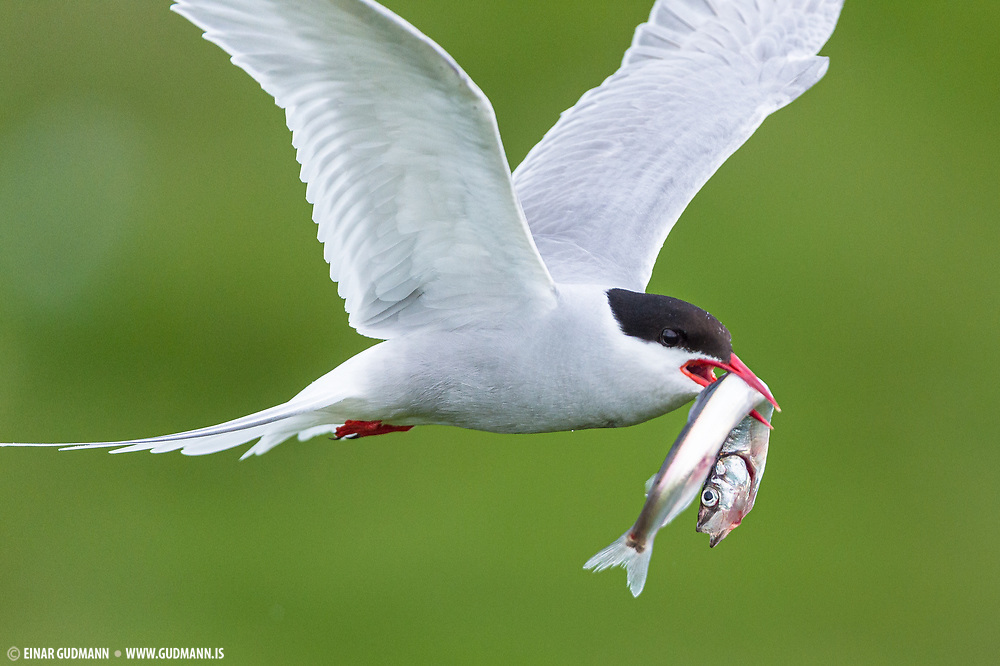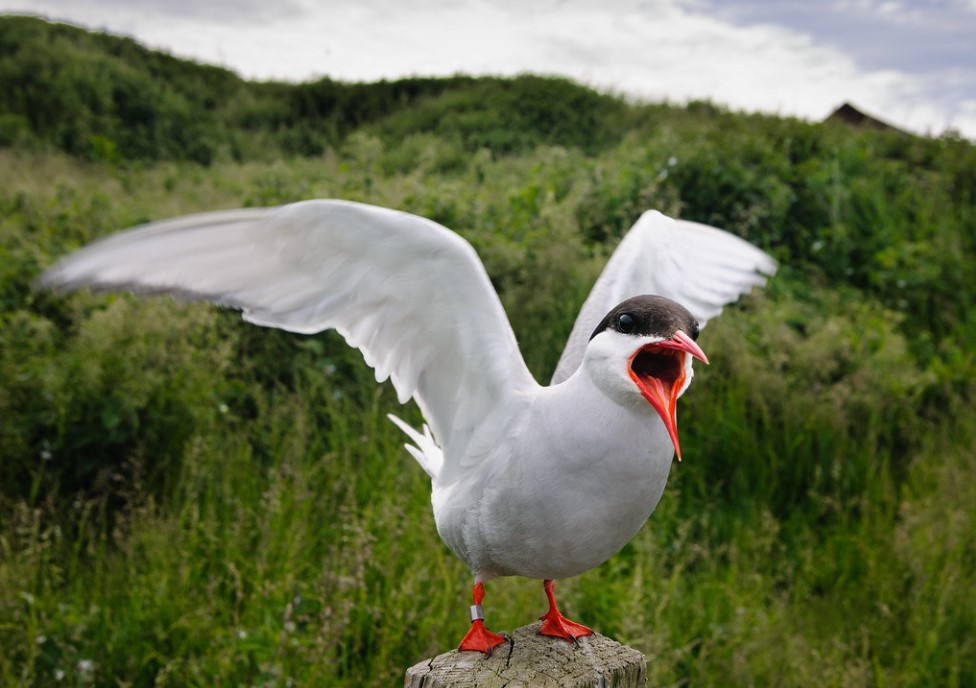The Arctic tern (Sterna paradisaea) is a remarkable seabird known for its extraordinary migratory journey, which is the longest of any bird species. This small, slender tern is famous for its nearly pole-to-pole migration, traveling from its breeding grounds in the Arctic and sub-Arctic regions to its wintering grounds in Antarctica. Covering over 70,000 kilometers (about 43,500 miles) annually, the Arctic tern experiences two summers each year, living in almost perpetual daylight.

The Arctic tern is easily identified by its striking appearance: a white body with a light gray back, a black cap on its head, and bright red legs and bill. During the breeding season, its plumage becomes even more vivid, making it one of the most elegant seabirds. These terns typically breed on rocky shores, islands, or tundra habitats, laying their eggs in simple scrapes on the ground. Both parents share responsibilities in incubating the eggs and feeding the chicks, fiercely defending their nests from predators.




In flight, the Arctic tern is agile and graceful, often seen hovering or diving to catch small fish and invertebrates from the water’s surface. Its feeding strategy, combined with its ability to cover vast distances, allows it to exploit a variety of marine environments throughout the year. Despite the challenges posed by its long migration and the harsh conditions of its breeding grounds, the Arctic tern continues to thrive, showcasing the incredible resilience and adaptability of this species.